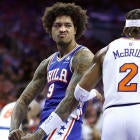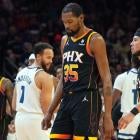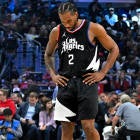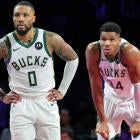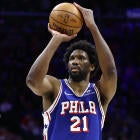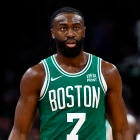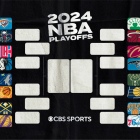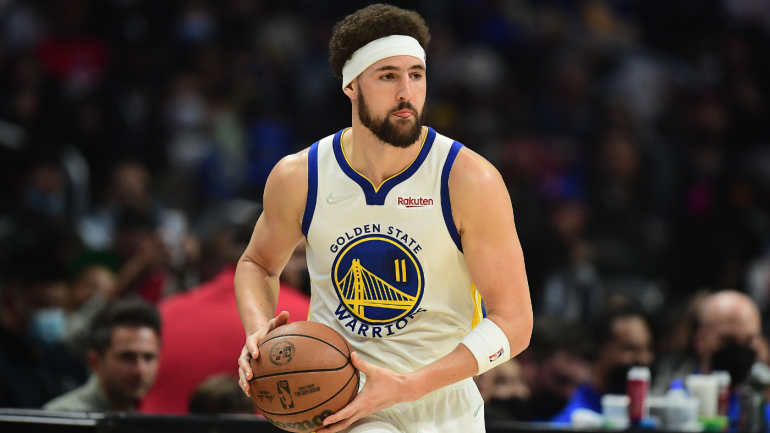
Golden State Warriors star Klay Thompson made his long-awaited return earlier this season, taking the floor on Jan. 9 in a win over the Cleveland Cavaliers. That was his first appearance since Game 6 of the 2019 NBA Finals, and in the two-plus years since then he had surgery for both a torn ACL and torn Achilles tendon.
Now that he's back in action, the talk is mostly about the Warriors' chances in the playoffs this season. They have the second-best record in the league at 42-17, and have the makings of a real contender as long as Draymond Green (currently dealing with a back injury) can make a healthy return after the All-Star break.
But before the games get going again, there was time for Thompson to look back and reflect on the past few years. Notably, in an interview with The Athletic's Anthony Slater, Thompson admitted that he wasn't as cautious as he should have been during his ACL recovery -- something that may have led to the Achilles tear. This is a long excerpt but it needs to be read in full:
Everyone experienced that forgettable 15-50 season differently. Thompson's time was spent mostly away from the team. He'd be seen on vacation while they were on a road trip. He rehabbed regularly with his own group in Southern California. He searched for new hobbies. He checked in with Rick Celebrini, the Warriors' lead medical decision-maker, but operated mostly away from the Celebrini microscope, without the desired diligence and cautiousness prescribed for an athlete coming back from an ACL after turning 30.
"The first time around I came back even bouncier," Thompson promises. "I came back strong, feeling great."
But there are different stages to the most careful of recovery approaches. Thompson's joint had healed. The pandemic had shut down the Warriors' facility. Thompson was in Los Angeles. Everybody who saw him in those open runs will tell you how great he looked. So he just kept playing, unsupervised and unconcerned about biomechanics that could trigger chain reactions.
"I wasn't at playing weight," Thompson said. "I was really strong. I was doing a lot of lifting, strengthening my knee. But I just missed the game so much at that time and I was cleared to play 5-on-5. But I'm not sure if it was the right move."
Thompson estimates, during that November 2020 open run, he weighed around 226 or 227 pounds.
"That's too big to be a shooting guard in my frame," Thompson said.
Thompson's regular-season NBA playing weight, he said, fluctuates between 216 and 220. It's painful for him to consider, but he's also realistic enough to understand that his impatience and the chain reaction of those extra 6-10 pounds very likely triggered the Achilles tear, which robbed him of another 1.5 seasons of his late prime and still threaten the direction of his career.
"It might've been costly," Thompson said. "I don't know. I try not to think about it too much. But it just, uh, it's something I learned from. I'm not in my early 20s anymore, where I can just play all offseason. That's what I was trying to do. Going forward, I'm not going to do that. I'm going to save it for the season."
There's no way to know exactly what caused Thompson's Achilles to snap. Would it have happened if he weighed 223 pounds? Or played in one less pick-up game each day? Or checked in more often with the Warriors medical staff? Maybe not, but who's to say? What is clear is that because of his eagerness to play the game he loves, he wasn't careful enough, and that's a pretty interesting thing for a star athlete to admit.
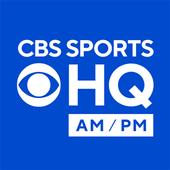
CBS Sports HQ Newsletter
Your Ultimate Guide to Every Day in Sports
We bring sports news that matters to your inbox, to help you stay informed and get a winning edge.
Thanks for signing up!
Keep an eye on your inbox.
Sorry!
There was an error processing your subscription.
It's also clear that it was an "alarm bell" for Thompson and the Warriors, head coach Steve Kerr said. They made sure the Achilles recovery wouldn't go the same way, which helps explain why Thompson's return kept getting pushed back. Initial reports suggested he could play around Christmas, but he didn't end up making his debut until mid-January.
The process appears to be working. Thompson has understandably looked rusty early on, but is slowly regaining his form and confidence. In six games in February before the break he was putting up 19.5 points, 4.5 rebounds and 3.7 assists per game, while shooting 44 percent from 3-point land.














